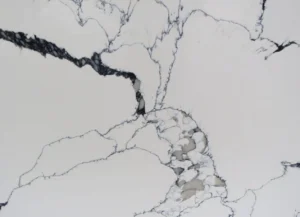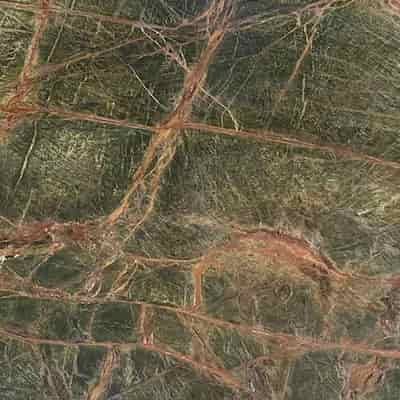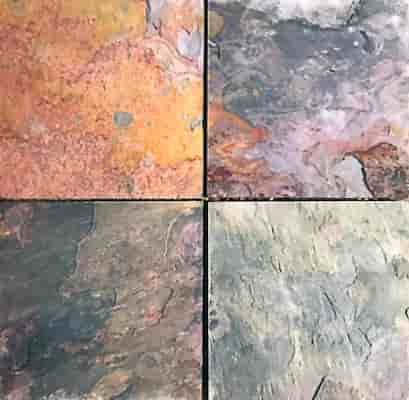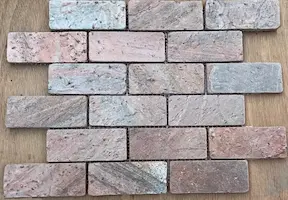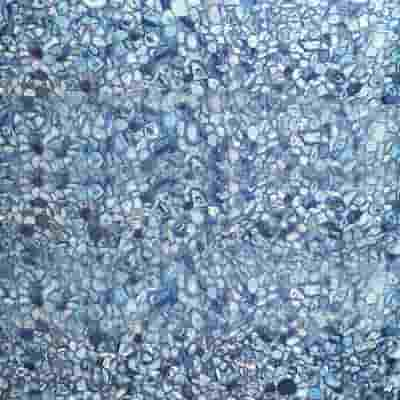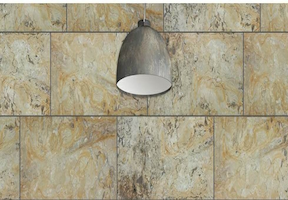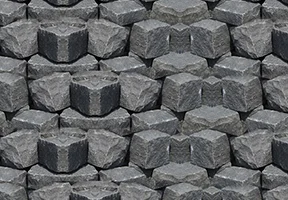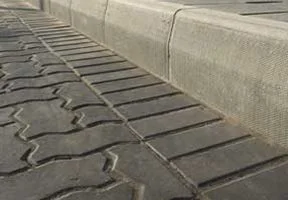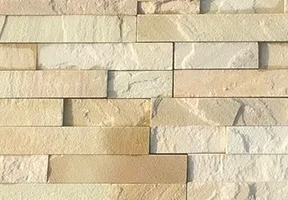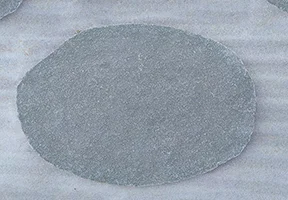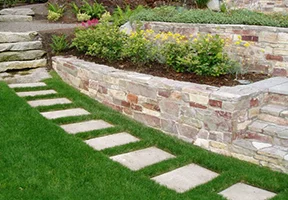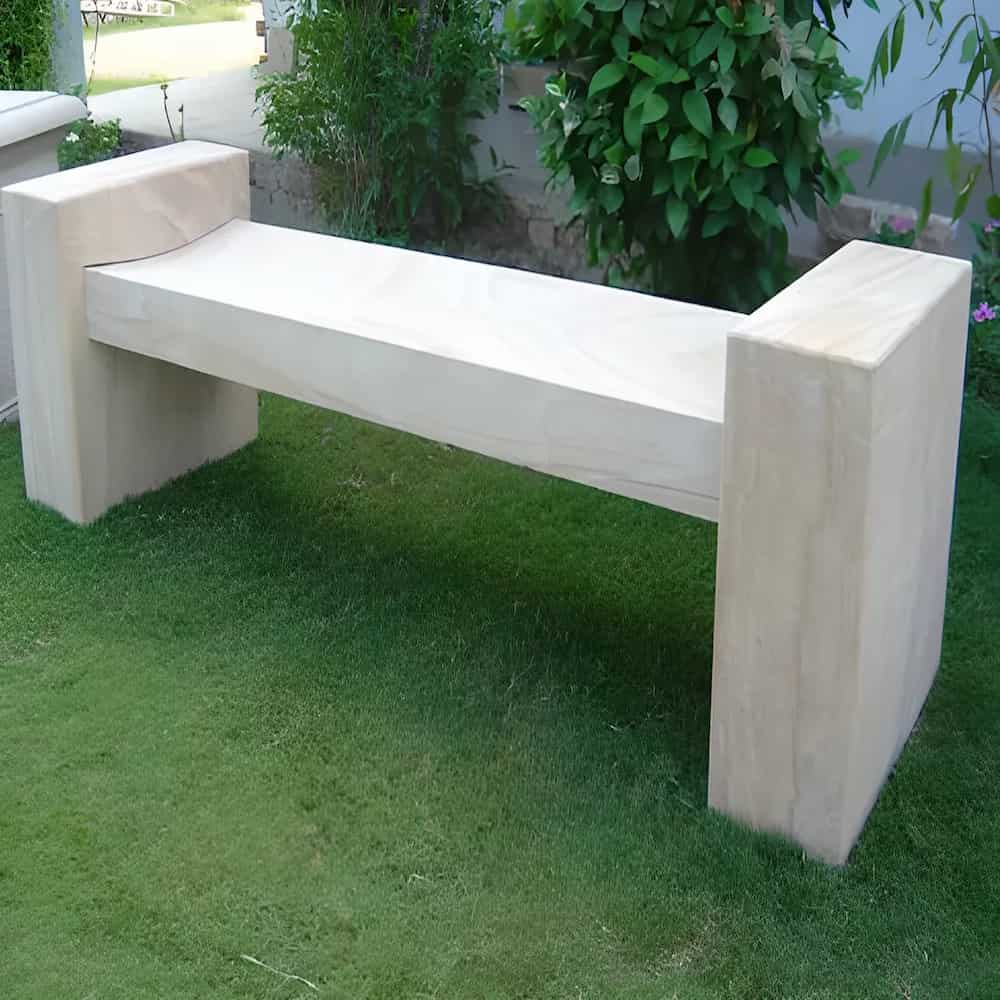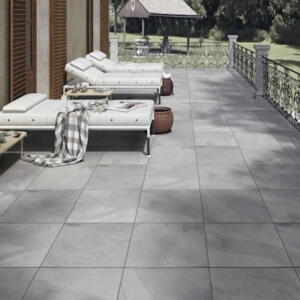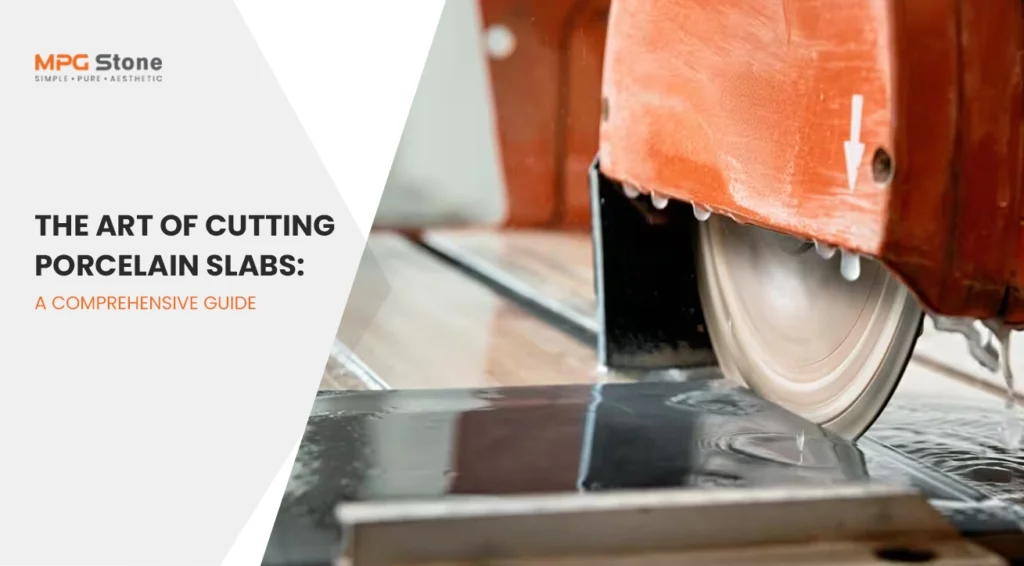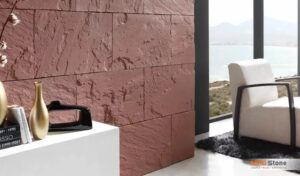Porcelain slabs have gained immense popularity in the world of engineered stones, and the primary reason behind this is their exceptional properties and the benefits they offer. It is a highly durable, versatile stone that is also aesthetically appealing when it comes to looks.
Demand for porcelain stone slabs has increased in recent years, and many homeowners and designers prefer using this distinctive stone in their projects. Whether you are working on a commercial design or a home improvement project, understanding the art of cutting porcelain slabs is an essential thing to do.
How you cut porcelain slabs plays a vital role in the design of your preferred project, and in this blog, we will delve into the intricacies of cutting porcelain slabs, including all the essential details. We will cover everything from tools to be used and safety precautions to different techniques we can use for cutting.
Let’s dive in and master the art of working with these remarkable materials.
Table of Contents:
- Understanding Porcelain Slabs
- Essential Tools for Cutting Porcelain Slabs
- Safety First: Precautions and Gear
- Cutting Techniques for Porcelain Slabs
- Tips for Achieving Precision Cuts
- Handling Complex Cuts and Shapes
- Finishing Edges: Honing and Polishing
- Maintenance of Cutting Tools
- Maintaining Porcelain slabs
- Conclusion
1. Understanding Porcelain Slabs
Porcelain slabs are not natural; they are engineered stones that are created by baking the clay at a high temperature. The reason behind their creation is to mimic the look of natural stones and add durability and other stunning features of engineered stone to them.
These slabs are relatively denser in nature and have a hard and strong surface that offers high durability and remarkable resistance to water, heat, and normal wear and tear. They contain an inherent strength due to their manufacturing process, which makes them a popular choice for countertops, walls, floors, and outdoor installations.
2. Essential Tools for Cutting Porcelain Slabs
Before you dive into the cutting porcelain slabs, you must have some essential cutting tools in hand, which include:
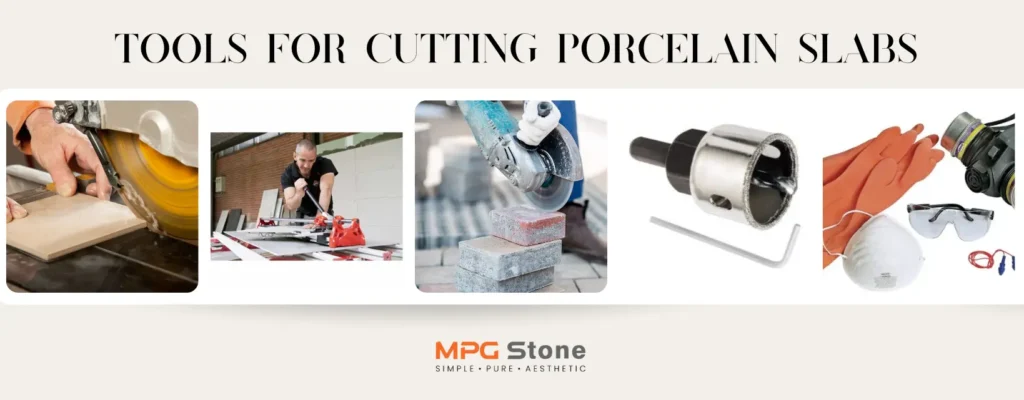
- Wet Saw:A wet saw is a primary tool you will need while cutting porcelain slabs, as it is a small stationary saw that uses a water stream to keep the diamond-edged blade cool and lubricated during the cut.
- Tile Cutter:A tile cutter is a manual cutting tool used to cut hard objects to a required shape or size. It is an easy-to-use tool that doesn’t require a power source and provides a straight cut to the tiles and slabs.
- Angle Grinder with Diamond Blade:An angle grinder with a diamond is a versatile and useful tool used for intricate cuts and shaping in various construction and renovation projects. It also has variable speed benefits that can be adjusted as per different cutting needs and requirements.
- Diamond Hole Saw:A diamond hole saw is a tool designed to drill holes in porcelain slabs for fixtures or outlets. This tool is welded with diamond, as it is the toughest known material on earth.
- Safety Gear:Using safety materials is a must to protect yourself from any potential harm during the cutting process. It includes things such as hearing protection, safety glasses, dust masks, and gloves.
3. Safety First: Precautions and Gear
Safety is a must and should be a priority while working with cutting tools and materials. Here below, we have listed some safety measures to take during the cutting process, which include:
- Safety Glasses: The potential risk of getting debris and dust in your eyes is possibly there while working, so to protect your eyes, do wear safety glasses.
- Dusk Mask: While cutting the tiles, a flow of dust in the air is possible, and to prevent inhaling airborne particles, you must wear a dust mask.
- Hearing Protection: The cutting of hard tiles generates noise that can differ from stone to stone, from lower to higher, and may cause you hearing damage. Wear hearing protection to prevent ear damage.
- Gloves: Hands are at the highest risk of injury, and to prevent that, it is highly recommended to wear gloves, as they also help in a firm grip on tools.

4. Cutting Techniques for Porcelain Slabs
There are various cutting techniques that can be used to achieve the desired cut and shape based on the type of tool you have, which are as follows:
- Wet Saw Cutting:It is an ideal tool for straight cuts and can be used for both smaller and larger project requirements. The water-cooled diamond blades help create a precise cut without overheating the porcelain material.
- Tile Cutter:A suitable tool to make simple straight cuts on the surface. All you need to do is score the surface of the slab using the tile cutter tool, and then apply pressure to break the slab along the scored line.
- Angle Grinder with Diamond Blade:If you require some complex cuts and shapes in your porcelain tile, then it is the perfect cutting material to achieve that look. It helps in seamlessly achieving difficult shapes, but remember to use a continuous-rim diamond blade to prevent chipping.
- Diamond Hole Saw:It might be possible that you will be required to have some holes in your porcelain slabs, and to achieve that easily, this material is a perfect choice. But it is recommended to use a guide or template to ensure accurate hole placement.
5. Tips for Achieving Precision Cuts
Achieving precision cuts is a task that requires much patience and technique, which we have listed below. Have a look at the steps:
- Marking: Mark the place where you want a cut and draw the cut line using marking tape or a pencil to guide your cuts easily.
- Adjustment: Adjusting the tool is a necessity. For wet saw cutting, adjust the blade depth to slightly more than the thickness of the slab.
- Maintaining Pace: To maintain control over the slab and prevent overheating, maintain a steady pace while cutting the stone.
- Avoid Pressure: Let the blade do the work; avoid excessive pressure from the stone and the tool that could damage the blade or the porcelain.
6. Handling Complex Cuts and Shapes
Handling complex cuts and shapes that are difficult to achieve is a task that requires the most attention and focus.
To achieve your desired intricate designs and complex cuts, an angle grinder with a diamond blade is your best friend. Take your time and follow these steps:
- Clear Marking: Mark the cut line clearly to ensure a precise cut from start to end.
- Small Steps: Make small, controlled cuts and avoid rushing through the process.
- Internal Cutting: If making internal cuts, drill a hole at the corners to allow for easier blade insertion.
7. Finishing Edges: Honing and Polishing
We all know that cutting makes the edges of stone slabs rough, and smoothing them will give them a precise and clean look. So to achieve these desired shapes, use a honing stone or sandpaper to smooth out the edges well.
For a polished finish, gradually increase the grit of the sandpaper until you achieve the desired smoothness.
8. Maintenance of Cutting Tools
Maintaining the cutting tools is an essential task to perform, as they have many uses. Not only can they be used for cutting tiles, but for a lot of other tasks too.
So, Regularly clean and inspect your cutting tools. Replace the blades if they show signs of wear or damage. Proper maintenance ensures the longevity of your tools and the quality of your cuts.
9. Maintaining Porcelain Slabs
Porcelain is a low-maintenance engineered stone that doesn’t require sealing or regular maintenance. But maintaining it on a weekly basis will be enough to keep it looking new for years to come.
Cleaning it with warm water and mild detergent using a mop or damp cloth is all you need to do to make it look new as always.

10. Conclusion
Cutting porcelain slabs requires precision, patience, and the right tools. By understanding the different techniques and following safety precautions, you can achieve professional-looking cuts that enhance the beauty and functionality of your projects.
Remember to invest in high-quality tools, practice on spare materials, and refine your skills over time. With dedication, you’ll become a master of cutting porcelain slabs and bring your design visions to life.

